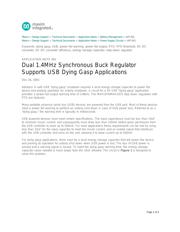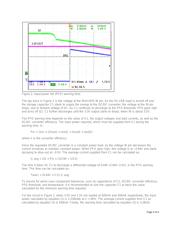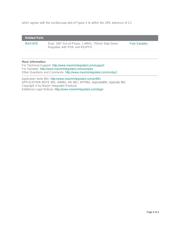herunterladen

Maxim > Design Support > Technical Documents > Application Notes > Battery Management > APP 891
Maxim > Design Support > Technical Documents > Application Notes > Power-Supply Circuits > APP 891
Keywords: dying gasp, USB, power-fail warning, power-fail output, PFO, PFO threshold, DC-DC
converter, DC-DC converter efficiency, energy storage capacitor, step-down regulator
APPLICATION NOTE 891
Dual 1.4MHz Synchronous Buck Regulator
Supports USB Dying Gasp Applications
Dec 18, 2001
Abstract: A safe USB "dying gasp" shutdown requires a local energy storage capacitor to power the
device and prolong operation for orderly shutdown. A circuit for a 5V USB "dying gasp" application
provides a power-fail output warning time of 2.88ms. The MAX1970/MAX1972 step-down regulators with
PFO are featured.
Many portable universal serial bus (USB) devices are powered from the USB port. Most of these devices
need a power fail warning to perform an orderly shut down in case of USB power loss. Referred to as a
"dying gasp," the warning time is typically in milliseconds.
USB powered devices must meet certain specifications. The input capacitance must be less than 10uF
to minimize inrush current, and subsequently must draw less than 100mA before given permission from
the USB controller to draw up to 500mA. For most applications these requirements can be met by using
less than 10uF for the input capacitor to meet the inrush current, and an enable signal that interfaces
with the USB controller and turns on the unit, allowing it to draw current up to 500mA.
For dying gasp applications, there must be a local energy storage capacitor that will power the device
and prolong its operation for orderly shut down when USB power is lost. The loss of USB power is
sensed and a warning signal is issued. To meet the dying gasp warning time, the energy storage
capacitor value needed is much larger than the 10uF allowed. The circuit in Figure 1 is designed to
solve this problem.
Page 1 of 4
Verzeichnis






